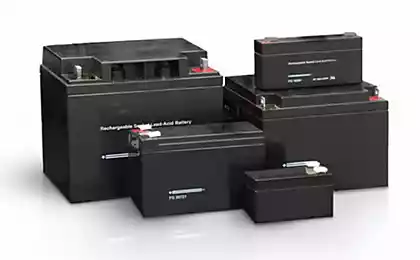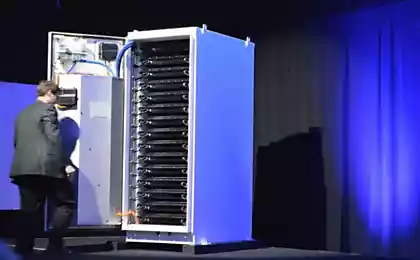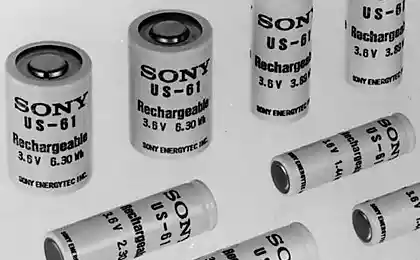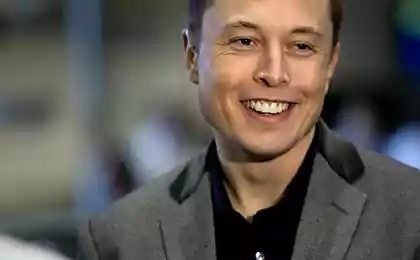542
The future of lithium batteries

The population growth, environmental pollution and reduction of running out of natural resources had necessitated the creation of innovative solutions in the field of clean technologies, which would be smarter, safer and more efficient. However, high costs and technical limitations in the field of energy storage hinder the achievement of parity between providers of renewable and traditional energy sources from the point of view of their scope and cost.
The future of cleantech may depend on technological developments in has not yet received the recognition it deserved sphere of lithium batteries.
A small lithium battery, which is often used in toys, laptops, mobile devices, and machine tools, in the near future may become a major power source for cars and larger grids. Ordinary battery can make an almost infinitely to move not only the rabbit from the Energizer ads, but all of humanity, because we all want to live on a clean planet, without causing harm to the environment.
As rapidly as the wind changes its direction, and development in the field of batteries radically changing the design processes of products in the rapidly developing clean technology sector. Innovative companies in need of production tools, such as PLM that will enable them to make the most effective use of the developments and to quickly rebuild areas of production to remain competitive.
The common battery: the key to sustainable development.Before we unveil the curtain that hides the future of energy storage, let us turn to the history of batteries, in particular lithium, which originates from the Baghdad battery, referred to already in 2500 BC.Lithium ion batteries were first proposed in the 70-ies of the last century, and received commercial distribution in the ' 90s. Since then, the market for lithium ion batteries rose to 11 billion US dollars (2010), and it is expected that by 2020 it will be 43 billion. According to forecasts of the analytical Agency Global Industry Analysts (GIA), the global market for all types of household batteries can reach 55, 4 billion US dollars in 2017. Lithium batteries represent a "secondary battery", that is, assume the ability to recharge, while "primary batteries" doseage. Secondary batteries account for only 10% of the total volume of the batteries, but form 60% of the global market of batteries for the cost. To be recycled are lead acid, Nickel cadmium, Nickel metal hydride, sodium-sulfur and flow batteries.
According to the world report batteries for 2012, the total world demand for primary and secondary batteries will increase by 8.5 per cent to $ 144 billion by 2016. It is expected that the Chinese market batteries will retain their leading position and, in addition, will develop at the fastest pace thanks to the huge sector of electronics manufacturing, and increased production and usage of cars. With the increase in the national production base and personal income the sale of batteries in India will also grow, although somewhat slower than in China.
The report forecasts that sales in the markets of consumer goods in 2016 will grow at a record pace. Income growth in developing countries will trigger increased use of basic devices that run on batteries, and the increasing use of portable electronic devices, in turn, will spur the demand for batteries in the world market of consumer goods. The report noted that the expected growth of demand for secondary batteries will be higher than sales of primary batteries.
The popularity of portable electronic devices rapidly increased, which led to the increase in the proportion of providers of secondary batteries, especially lithium — in the market. According to a recent report prepared by the portal Marketresearch.com to 2022 is expected to reduce the cost of lithium ion batteries by 45%. Lithium ion batteries may give up its market share of cheaper salt batteries in larger projects, but will remain the main source of food for projects that are limited in space, due to its high Energoproject.
It is expected that the market volume of lithium batteries will continue to grow by about 10 percent a year. High demand for electronics will also provoke a certain demand for Nickel-metal hydride batteries (which are sold in stores in traditional formats such as AAA and AA, used as small rechargeable batteries).
The growth in demand for rechargeable batteries. Production of hybrid vehicles and electric vehicles, and increasing the production and use of traditional cars will play into the hands of the suppliers of automotive batteries. According to the forecasts given in report by independent research firm Lux Research, the market for batteries for electric cars will increase from 7.7 billion dollars in 2010 to 14.5 billion in 2015. In the electric vehicles sector are used four types of rechargeable batteries:
Lead-acid — traditionally, most electric vehicles used lead-acid batteries due to their most proven technology, wide availability and low cost.
Water Nickel-based Nickel — cadmium and Nickel-metal hydride batteries are the main types of water (using liquid electrolyte) batteries based on Nickel. The main problems of the Nickel-cadmium batteries are the cost and toxicity of cadmium (EU placed bans on most occasions of their use).
Lithium ion is the most popular and most common type of batteries for portable consumer electronics, characterized by durability, high specific energy consumption, relatively low weight and fast enough garagemate/ energy efficiency.
Lithium metal and air-metal — are currently under development, suggest a tenfold increase in energy consumption. Was not yet made their full-scale launch in the transport sector because the technology is still under research and development, but it has already demonstrated some success in the operation and the potential of Energoproject in certain areas. To an interesting conclusion came experts of the analytical company Lux Research in its latest report, "Alternative ways of energy storage," according to which a significant role in the jump in the demand for these batteries over the next five years will be cars and e-bikes and scooters. Projected market size of electric bikes and scooters will be 10.9 billion dollars in 2015 compared to 6.4 billion in 2010. In this regard, regulators, automakers and the media are keeping their eyes on battery technology for hybrid and electric vehicles. No batteries for grid... yet. Gross investments to fixed capital industrial production on a global scale and measures for the development of industrial production in developing countries will stimulate sales of batteries for industrial use and network energy storage. In its latest report, the experts of the portal MarketResearch.com say that the main option for use in grid batteries are lead-acid batteries that generate more than 55 percent of all revenues from grid batteries currently. By 2018, their share will be reduced to approximately 30 percent, as will the commercialization of new technologies in the field of grid cells. Lead-acid batteries will be converted using carbon electrodes, which is expected to lead to a fourfold increase in their productivity. In addition, the market will struggle also ultracomplete that combines lead and carbon electrodes. In 2018, the income from sales of lead-carbon batteries/ ultraacoustic sostavyat about $ 300 million. Great future batteries. Lithium ion batteries will dominate on the automotive market and the consumer market for a long time due to its high performance and energoprojekty, long cycle and long service life and safe operation. Lithium metal systems are the potential to increase Energoproject in the future. However, the internal issues associated with reversibility, cycleroute and safety of lithium metal batteries may prevent the viability of such systems. Do not stop research aimed at increased productivity and reduction of lithium ion batteries. In August 2012, scientists from the Korean advanced Institute of science and technology (KAIST) has developed a solid thin film lithium ion battery that, they claim, has the highest energy among all flexible batteries.
Another trend, which will lead to a breakthrough in the industry of power supplies, is to develop ultra-thin flexible lithium polymer batteries, which can be used in electronic books and tablets of the future — a paper-thin, and with the possibility of addition.
The prosperity of the ecosystems of clean technologies necessary for the development of batteries, requires cooperation between predprinimatelej in the field of advanced technologies, power sources, research institutions and government agencies that must approve the policies and methods to encourage further research into new technologies for energy storage. Despite its small size, batteries, in particular lithium ions, can play a huge role in unlocking the potential of renewable energy sources in the future. PLM allows you to quickly respond to changes and to change the direction of production. New advances in storage technologies energy Herald the advent of the Renaissance and the unlimited possibilities of renewable energy sources. More recently, the company Solid Power showed evidence that it came close to the creation of a lithium metal battery that will double the range of electric vehicles available on the market. This breakthrough could radically change the entire industry of electric motor industry. The tools of rational management of product lifecycle (PLM) will allow OEMs to introduce revolutionary innovations, particularly in the sphere of the batteries an integral part of their products and in no time to change the direction of production.
Source: alternativenergy.ru























